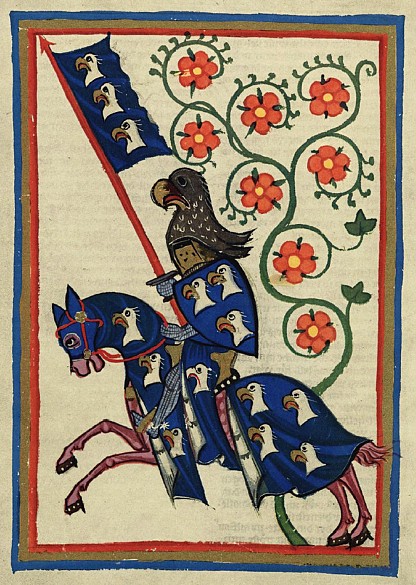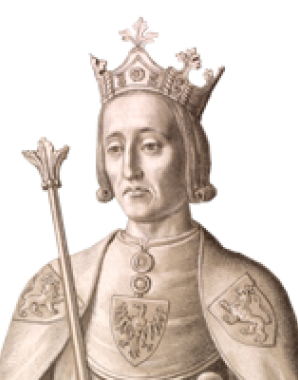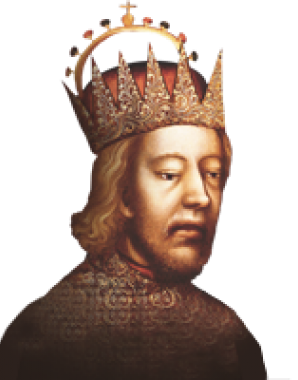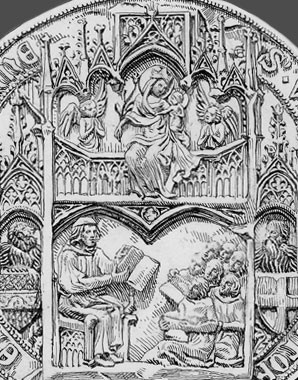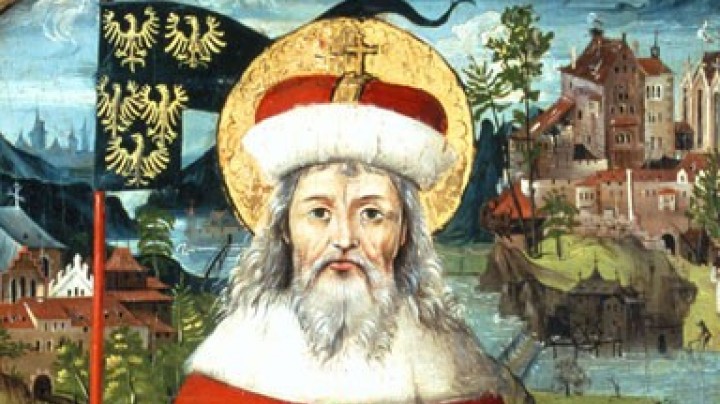If only I could read
In the fourteenth century the new culture of reading and writing spread predominantly among the burgher class. The nobility preferred to amuse themselves at hunting and dancing.
An unusual document of a nobleman being able to read is provided by Hartmann von Aue. In 1190 he wrote these lines in the prologue to his Armer Heinrich.The author identifies himself as an educated knight who could at least read, thus emphasizing his own cultivation and revealing himself as a learned and competent narrator.Ein Ritter so geleret was
Daz er an den buchen las
Waz er dar an geschriben vant
Der was hartman genannt,
Un was ein diensteman von owe.
There once was a knight so learned
That he could read everything that he found written in books.
He was called Hartmann
And was a liegeman zu Aue.
The poet Wolfram von Eschenbach (c. 1170 to c. 1220–1237) mentions in his Parzival that he could not read.In his Willehalm he emphasizes this fact: Ichne kann decheinen bouchstab. I am unlettered. It may be assumed that his epics were composed and recited orally.Unkundig ist mir ganz das lesen,
Wie kundig andere das gewesen.
I cannot read
As others can.
In the Middle Ages reading and writing were two separate skills that were not necessarily connected with each other and were taught as separate subjects. For a time, reading was intended for a small circle of people; literature was frequently declaimed or recited. A lack of adequate lighting after sundown restricted the practice of reading or reading aloud to others.
Reading served primarily in training boys for the priesthood. The clergy had to be able to read and sing well. Writing skills were not required for the time being. Nonetheless, during the course of the fourteenth century increasing numbers of priests learned to write as well as read. The language of the clergy and the community of scholars was Latin.
Up to the middle of the fifteenth century not all students at the university in Vienna were able to write, despite the fact that teaching was mainly based on copying lectures down verbatim. The growth of the towns with increasing differentiation among their populations together with the expansion of the element of display in courtly life accelerated the spread of this skill. This was accompanied by the huge increase in texts in vernacular languages, for example the medieval German verse epic. It is estimated that between ten and thirty per cent of the urban population could read and write in the late Middle Ages. In particular the clergy, large parts of the nobility, councillors and merchants in the larger towns and cities as well as increasing numbers of artisans and peasants mastered these skills.
Aristocratic culture was initially oral, and some circles were even hostile to written culture. Only noblewomen, or noble youths who were intended for the Church, acquired this skill. It is presumed that King Rudolf of Habsburg (1218–1291) was unable to read or write, but his children received a careful education. Rudolf IV signed a number of documents in his own hand. By the fourteenth century most rulers were able to read and write.
